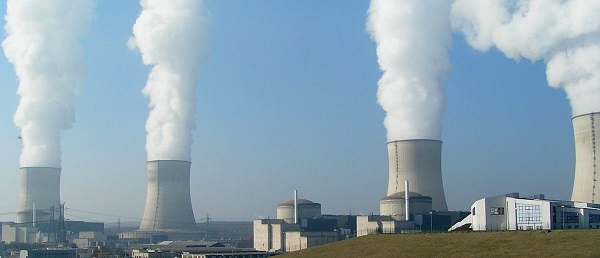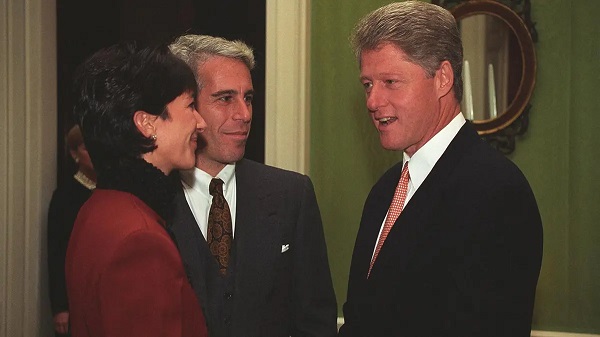Daily Caller
U.S. Blows Narco Vessel Out Of The Water In Southern Caribbean


From the Daily Caller News Foundation
The U.S. struck a cartel vessel in the southern Caribbean transporting drugs Tuesday, marking the first shots fired by the American military in President Donald Trump’s war against the cartels.
The strike sank a vessel belonging to Venezuelan drug cartel Tren de Aragua on Tuesday morning, with 11 cartel members confirmed dead in the attack, Trump announced Tuesday. The strike was carried out by U.S. Southern Command in international waters, where three Aegis-class missile boats are stationed alongside other assets to disrupt the Latin American cartel’s drug trade routes.
“No U.S. Forces were harmed in this strike. Please let this serve as notice to anybody even thinking about bringing drugs into the United States of America. BEWARE! Thank you for your attention to this matter!!!!!!!!!!! [sic],” Trump said on Truth Social Tuesday evening.
Dear Readers:
As a nonprofit, we are dependent on the generosity of our readers.
Please consider making a small donation of any amount here.
Thank you!
. @POTUS “Earlier this morning, on my Orders, U.S. Military Forces conducted a kinetic strike against positively identified Tren de Aragua Narcoterrorists in the SOUTHCOM area of responsibility. TDA is a designated Foreign Terrorist Organization, operating under the control of… pic.twitter.com/aAyKOb9RHb
— DOD Rapid Response (@DODResponse) September 2, 2025
🇺🇸 ON VIDEO: U.S. Military Forces conducted a strike against Tren de Aragua Narcoterrorists. The strike occurred while the terrorists were at sea in International waters transporting illegal narcotics, heading to the U.S. The strike resulted in 11 terrorists killed in action. pic.twitter.com/iszHE0ttxQ
— The White House (@WhiteHouse) September 2, 2025
Trump designated various Latin American cartels as terrorist organizations in early August and authorized the U.S. military to strike the groups shortly after. Tren de Aragua originated from a brutal prison in Venezuela and made its way to American shores under the Biden administration.
Venezuelan dictator Nicolas Maduro has also made thinly veiled threats against America in response to U.S. forces deploying to his coast, readying 2 million militia personnel while also deploying ships and drones off the nation’s shores. Maduro said in August that he would defend “[our] seas, our skies and our lands” and also called the deployment an “outlandish, bizarre threat of a declining empire.”
Both Tren de Aragua and the Cartel de los Soles both operate out of Venezuela, with the latter having connections to Maduro’s government.
Tren de Aragua members have been implicated in a slew of murders, drug operations and sex trafficking rings across America and beyond.
Artificial Intelligence
AI Drone ‘Swarms’ Unleashed On Ukraine Battlefields, Marking New Era Of Warfare


From the Daily Caller News Foundation
Artificial intelligence-powered drones are making their first appearances on the battlefield in the Russia-Ukraine war as warfare creeps closer to full automation.
In bombardments on Russian targets in the past year, Ukrainian drones acting in concert were able to independently determine where to strike without human input.
It’s the first battlefield use of AI “swarm” technology in a real-world environment, a senior Ukrainian official and Swarmer, the company who makes the software, told the Wall Street Journal in a Tuesday report. While drones have increasingly defined modern battlefields, swarms until now had been confined to testing rather than combat.
“You set the target and the drones do the rest,” Swarmer Chief Executive Serhii Kupriienko told the WSJ. “They work together, they adapt.”
So far, the Swarmer technology has been used hundreds of times to target Russia assets, but was first used a year ago to lay mines on the front, the Ukrainian official told the WSJ. The software has been tested with up to 25 drones at once, but is usually utilized with only three.
Kupriienko told the WSJ that he was preparing to test up to 100 drones at once with the linking software.
A common arrangement used on the battlefield includes one reconnaissance drone to scout out the target and two explosive drones delivering the payload on target, the official told the WSJ.
While Western nations such as the U.S., France and the United Kingdom are also pursuing drone swarm technology, they have not deployed swarm technology on the battlefield the way Ukraine has, according to the WSJ. Currently, autonomous weapons are not regulated by any international authority or binding agreement, but ethical concerns around the technology has led many to call for increased regulation of weapons like the Swarmer system.
The Ukrainian Ministry of Foreign Affairs did not immediately respond to the Daily Caller News Foundation’s request for comment.
Daily Caller
Trump’s ‘Massively Ambitious’ Nuclear Power Goals Might Save US From Rolling Blackouts


From the Daily Caller News Foundation
By Audrey Streb
While the Trump administration has been sounding the alarm over an imminent national energy crisis, it has also set aggressive nuclear expansion goals that industry insiders told the Daily Caller News Foundation may be achievable despite their ambitious scale.
The Trump administration has set a goal to quadruple nuclear power in the U.S. by 2050 and has moved to boost the energy technology through a smattering of executive actions. Though not every nuclear target outlined by the administration may be met, Trump has signaled that the U.S. could dramatically expand nuclear power in the coming years which is vital as blackouts loom and the artificial intelligence (AI) race accelerates, industry insiders told the DCNF.
“It’s going to be tough, but America has stepped up to plenty of major challenges like this in the past,” Benjamin Reinke, senior vice president of nuclear company X Energy and former executive director of the Office of Strategic Planning in the Department of Energy (DOE) under Trump’s first administration, told the DCNF. “Renewed focus on energy reliability certainly is a tailwind for the nuclear sector because of the attributes of advanced nuclear power. The opportunity to capture and win the global AI race with China is something that the U.S. has [to do].”
Dear Readers:
As a nonprofit, we are dependent on the generosity of our readers.
Please consider making a small donation of any amount here.
Thank you!
President Donald Trump signed four May 23 executive orders to clear hurdles for nuclear energy and set ambitious goals to expand the industry. Several nuclear energy sector insiders that spoke with the DCNF are gambling that America will be able to accomplish several of the goals outlined by the Trump administration, even if they are hesitant to believe that power generated from nuclear power could quadruple as soon as 2050.
Several energy insiders warned that it is vital to expand nuclear power now as it is a highly reliable energy resource, and widespread rolling blackouts are being forecasted by several analyses including one July report by the DOE that states blackouts could increase by a factor of 100 by 2030. Power demand is surging for the first time in decades and electricity consumption is projected to surpass the all-time 2024 high, according to the Energy Information Administration (EIA).
As the sector continues to boom, the industry will bring new jobs, technological innovations and power-hungry data centers. Nuclear advocates argue that the energy resource is well equipped to do the heavy lifting for the U.S. power grid.
Nuclear power plant generation has been declining in the U.S. since the 1990s and America has only managed to build two large nuclear reactors in the last 20 years. The newest reactors came online in Georgia nearly two decades after the projects began, running billions over budget and years behind schedule.
Big Tech is looking to nuclear as an attractive option to power its data centers and has considered adding small modular reactors (SMRs) as well as reviving shuddered nuclear plants to solve their power problems. Several states are seeing a revival in nuclear technology, with Microsoft making a deal to resurrect Three Mile Island in Pennsylvania and New York moving to open a new reactor after shuddering one just a few years ago. Additionally, the Michigan Palisades plant scheduled to reopen in October will mark the first defunct nuclear plant to return from the dead.
“Unlocking nuclear energy will be critical for meeting growing demand for affordable, reliable baseload power needed to fuel the AI race – our next Manhattan Project – while powering Americans’ homes and businesses,” a DOE spokesperson told the DCNF. “Thanks to President Trump’s
Reinke noted that Trump’s policies during his first administration started to breathe life into the nuclear sector, and former President Joe Biden also moved to forward nuclear technology through signing the ADVANCE Act. However, Biden’s energy policy focus centered around pushing for wind and solar projects, which some energy experts, grid operators and grid watchdogs have argued primed America’s power grid for outages.
“Energy security is national security,” Reinke said, echoing the phrase that Trump’s DOE repeated during the president’s first administration and is yet again a common slogan among cabinet members in the energy space.
“Folks are going to be without power,” Chief Development Officer of the Nuclear Company Juliann Edwards told the DCNF, referencing DOE’s July report. “By 2030 we’re going to start to see massive deficits in various parts of the United States. … The role nuclear plays is [that] it balances that baseload energy, so you have less volatility on the lines.”
The Nuclear Company is partnering with Palantir to boost nuclear development and is looking to develop its first fleet of reactor sites by the mid 2030s. Edwards noted that the Trump administration opening up federal lands for nuclear development “was huge because it opens up a lot of opportunities that didn’t exist before.”
DOE announced its initial selections for a nuclear reactor pilot program in line with one of Trump’s executive orders aimed at advancing 11 projects on Aug. 12. Among the selections was the nuclear company that designs and deploys reactors known as Oklo, the only selection chosen for more than one nuclear project.
Communications manager at Oklo, Paul Day, told the DCNF that Trump’s nuclear goals are “massively ambitious,” though they mirror America’s power needs.
“But I think it’s almost like a manifestation — we need this power. How are we going to get it? If we put our heads to the grind, we can actually get nuclear to do this,” Day told the DCNF. “Whether we can quadruple nuclear capacity by 2050, well, that remains to be seen. But there is an enormous amount of dead wood being cleared out here for the nuclear industry, and I think that will take us … in the right direction.”
Head of communications at Oklo Bonita Chester emphasized that the Trump administration has translated its nuclear ambitions into actionable steps that look promising to those in the industry. The Trump administration wants to have three reactors go critical by July 4, 2026, which is “highly ambitious, but what I’ve appreciated about this administration is they have been able to back a lot of these really quite dramatic plans with actual actions,” Chester said.
Chester added that fuel remains to be a huge hurdle for the nuclear industry. Advanced reactors need particular kinds of fuel, and Chester listed enriched uranium, recycled nuclear fuel waste and plutonium as viable options. Currently, the U.S. cannot supply enough fuel to power the influx of nuclear reactors, Chester added.
During his presidency, Biden designated nearly 1 million acres in Arizona outside the Grand Canyon as a monument, which shut down potential uranium development in the resource-rich area. The U.S. is a net importer of uranium and has been since 1992, according to EIA data. Canada and Kazakhstan are the biggest uranium suppliers to the U.S., according to EIA.
One of Trump’s executive orders included calling for the conversion of surplus plutonium to allow the private sector to use it, which has “never been considered before, and it’s incredible,” Chester said.
Changes at the Nuclear Regulatory Commission (NRC) are also a good sign for the sector, as Trump limited the wait time for permits to 18 months.
“We’ve never seen the NRC being so vocal about this stuff,” Chester said, noting that the NRC has been very public about reviewing projects ahead of schedule. Energy policy experts previously explained to the DCNF that permitting delays presented a major obstacle for the nuclear industry.
Notably, Chester told the DCNF that fast reactors have been commercialized in China and Russia, yet not in the U.S. where they were invented.
“We would be failing if we were just trying to turn on one reactor,” Chester said. “The goal is to commercialize our technology.”
-

 Bruce Dowbiggin1 day ago
Bruce Dowbiggin1 day agoMitch Ado About Marner: Angry Toronto Fans Needed A Scapegoat
-

 COVID-1918 hours ago
COVID-1918 hours agoCanada issues nationwide warrant for Freedom Convoy protester seeking asylum in the US
-

 Artificial Intelligence18 hours ago
Artificial Intelligence18 hours agoAI Drone ‘Swarms’ Unleashed On Ukraine Battlefields, Marking New Era Of Warfare
-

 Energy18 hours ago
Energy18 hours agoWaiting to Launch a New Oil Pipeline to the West Coast Until the Trans Mountain Reaches Full Capacity is a Bad Idea
-

 Censorship Industrial Complex1 day ago
Censorship Industrial Complex1 day agoComedy writer Graham Linehan arrested in UK for criticizing gender ideology on social media
-

 International18 hours ago
International18 hours agoHouse Oversight Committee releases trove of Epstein documents
-

 Artificial Intelligence17 hours ago
Artificial Intelligence17 hours agoWhen A.I. Investments Make (No) Sense
-

 Business1 day ago
Business1 day agoCanadians don’t just feel worse off—they actually are






